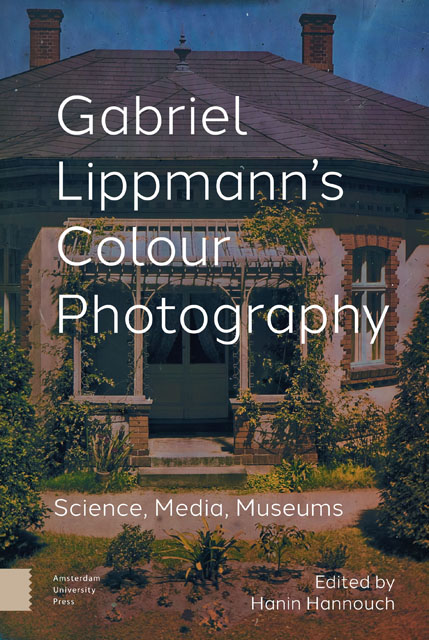Book contents
- Frontmatter
- Table of contents
- Gabriel Lippmann’s Colour Photography: A Critical Introduction
- Part I The Science of Colour Photography and the Colour Photography of Science
- Part II Media History, Aesthetics, and Culture
- Part III Contemporary Reception and Future Trajectories
- Afterword: Building Bridges over Standing Waves
- Index
12 - “It’s not just a picture, it’s a magical object”: Interview with Contemporary Lippmann Photographer Filipe Alves
Published online by Cambridge University Press: 16 November 2022
- Frontmatter
- Table of contents
- Gabriel Lippmann’s Colour Photography: A Critical Introduction
- Part I The Science of Colour Photography and the Colour Photography of Science
- Part II Media History, Aesthetics, and Culture
- Part III Contemporary Reception and Future Trajectories
- Afterword: Building Bridges over Standing Waves
- Index
Summary
Abstract
This interview with Lisbon-based artist, scientist, and contemporary Lippmann photographer Filipe Alves (*1979) explores his committent to producing interferential colour photographs today. Alves's practice of analogue colour photography has reshaped his studio into a site of media archaeological re-enactment of the photographic process. It has also lead to the adaptation of the chemistry behind it for current use, as well as to nuanced reflections about its history. In this conversation, Alves sheds light on his colourful endeavour so far, the enduring lure of the analogue, and the future trajectory of the Lippmann plate as a creative medium.
Keywords: contemporary photography, interferential colour photography, Filipe Alves, media archaeology, artist studio
Filipe Alves (*1979) is an artist and scientist based in Lisbon, where he studied architecture. With his associates, he co-founded “18:25,” a studio for virtual photography and architectural visualisation as well as the photography studio “Silverbox” where he practices historical analogue photography, such as the wetplate collodion process.
He has been using interferential colour photography for over a decade and has exhibited his work in various museums across Europe, including at the exhibition Slow Color Photography: Richard Neuhauss and Hans Lehmann's Images from the Preus Museum's Collection (2020) at Preus Museum: Norway's National Museum Photography, curated by Dr. Hanin Hannouch and Jens Gold, which was dedicated to the centenary of Lippmann's death (Preus Museum 2021). As a key figure in the growing artistic use of the Lippmann process, Alves's work is crucial to any comprehensive understanding of this vivid medium because it reveals one of its most exciting future trajectories. Adapting the chemistry needed for the interferential photograph to contemporary use, managing the repeated experimental failures to produce it, and creating photographs that resonate with current audiences, constitute both a challenge and a pleasure to Alves. In this interview, which has been edited and condensed for clarity, Alves sheds light on the intricacies of his endeavour thus far.
Hanin Hannouch: Out of all possible colour photographies, both old and new, why did you choose Lippmann photography?
Filipe Alves: I discovered it around 2010 when I started practising alternative processes such as the gum bichromate process and the cyanotype in my free time. I love to take pictures and to develop them in a darkroom, so I began buying chemicals to make some of the processes and then I found out about dichromated gelatin being used for holography.
- Type
- Chapter
- Information
- Gabriel Lippmann's Colour PhotographyScience, Media, Museums, pp. 289 - 296Publisher: Amsterdam University PressPrint publication year: 2022



